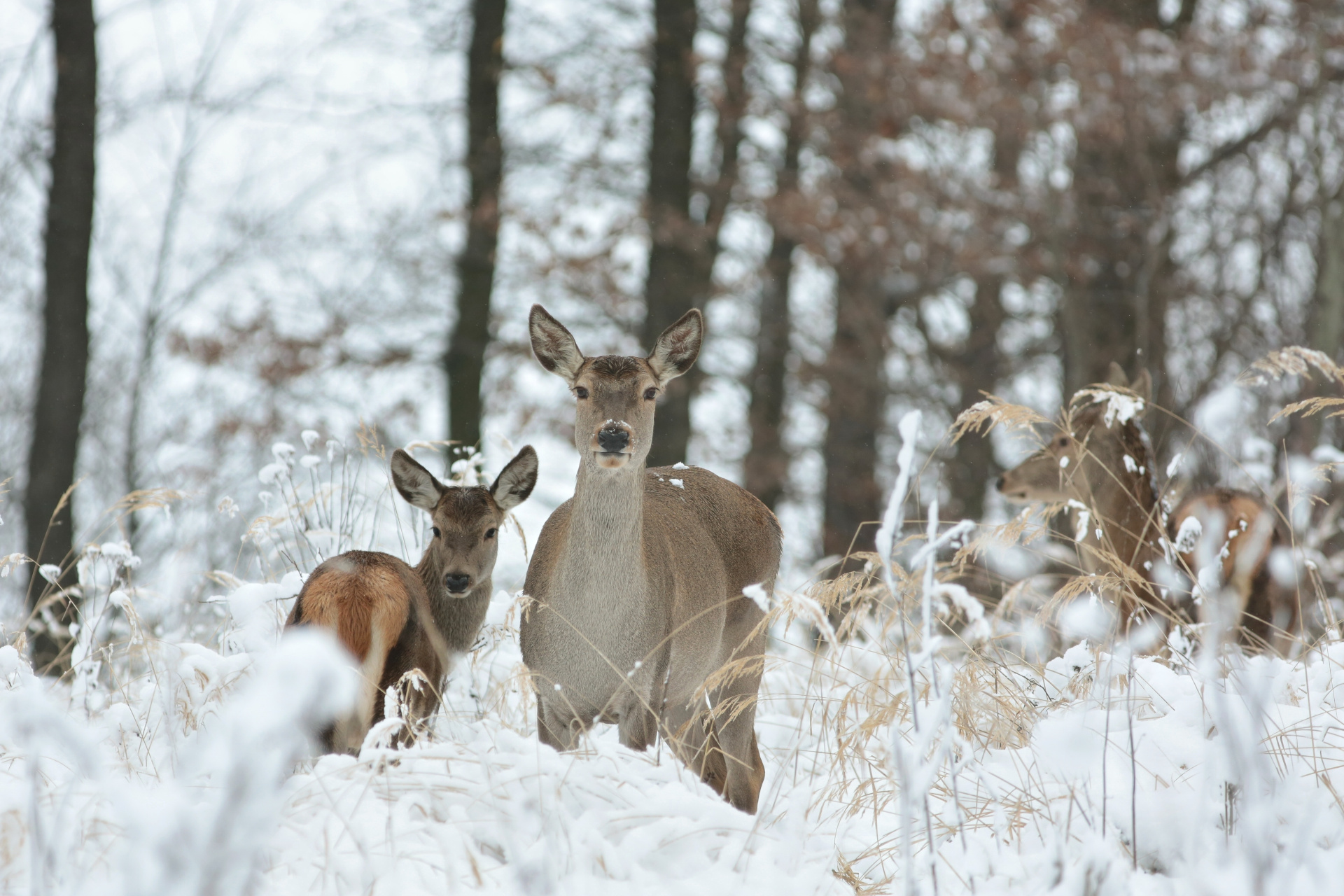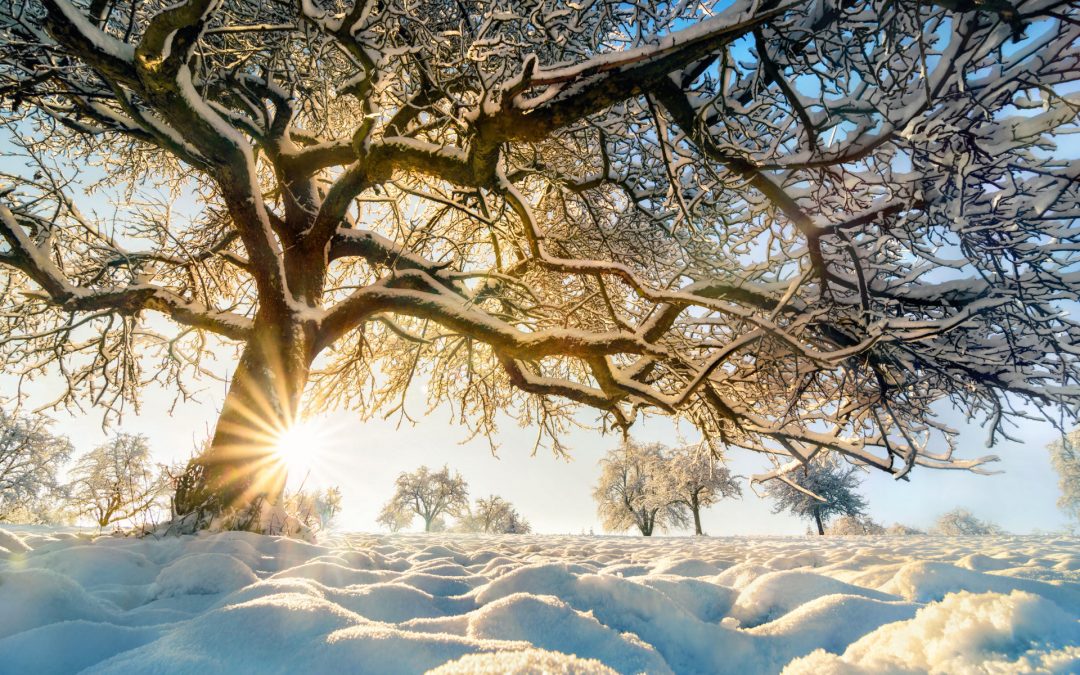We put much effort into planning, planting, pruning and protecting our backyard trees for good reason. Trees add pleasure to life as well as wildlife habitat and serious other perks including food and life-sustaining oxygen. We’ve watched Autumn leaves turn from earthy shades of burnt sienna to yellow ochre, then early snowfalls trace the branches with white. It’s all gorgeous, but if you are wondering how to protect those beauties through the coming winter, stay tuned. Some areas of Southwest and Central BC have already experienced snowfall, so here’s some tips on how to winterize your trees and keep them safe until next spring’s bloom.
Protecting seedlings means defending the whole tree from the roots to the canopy. Thin barked, young trees are especially vulnerable to rapid changes in temperature, wind and humidity. Frost heaves can push young roots to the surface because their roots are still shallow. Mulching adds a layer of protection to buffer cold snaps and save fragile roots from freezing. Effective winter mulch includes wood chips, pine needles, bark mulch and straw. Make sure to pull the mulch back off the trunk at the first sign of spring thaw, otherwise the bark can become diseased. Of course, snow is a natural insulator and can guard the roots from seasonal damage. Being proactive can save you a lot of grief next spring when you are out in the orchard or back yard for your first post-frost inspection.
- Wrap the trunk of your new seedling with tree winterizing tree tape/guard to protect from temperature scald.
- Water your trees and shrubs right up until the ground freezes solid to prevent winter burn.
- Wrap your trees to shield them from wind burn, road salt or other corrosive agents. Remember to remove the wraps in early spring so your trees don’t overheat.

Deer Protection
If deer are a problem in your area, try wrapping the trunks with any commercial product that is listed as eco-friendly. They may still be able to reach the branches, but at least you will have gained protection from girdling as they chew the bark for its nutritious cambium layer. Damaged tree bark is vulnerable to frost damage and insect infestation come spring. Providing an alternate source of food away from your trees may alleviate the problem somewhat. Deer fencing is an expensive but permanent solution to protect your backyard trees from these adorable intruders.
If you are still in the planning stages of your new landscape design, consider planting trees not appetizing to deer. Call our landscaping team for a consultation and we will help you plan, plant, and manage your future backyard garden.
Call Our Tree Loving Team
We invite you to call us for tree and landscaping services in Kamloops, Sechelt/Gibsons and the Lower Mainland.

